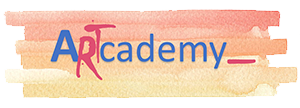

Alfajar, art in ceramic
Alfajar is a family business founded in Malaga in 1994, by José Angel Ruiz and Lola Díaz, who together with their two daughters are engaged in the manufacture and marketing of creative ceramics. Its products are characterized by their original design, craftsmanship and the creation and selling of signature ceramics. Everything is produced by hand, from modeling to decoration and finishing of the pieces.
Alfajar means ceramics in Arabic and after humble beginnings today they have a great shop in the Salvatierra Palace, a Baroque building of the XVIIth century located in front of the Cathedral of Malaga. Their designs recall traditional Greek and Phoenicians ceramics, but they also evoke the modernity of Picassian Cubism or Modigliani figures, both for the shapes of their objects and for their decoration. They also carry out unique works and designs under order and it is common that their works represent the trophies awarded in contests, events and tributes.

Bags and more for explorers and nature lovers, made by upcycling
WakiVaky is a young Slovak brand with an environmental and social dimension. We specialize in upcycling of textiles and textile waste which is then used to make backpacks, tote bags, fanny packs, cases, grocery packets and other practical everyday items.
We can also produce promotional and gift items for the company from their own waste material (banners, automotive textile waste,...).
Each product has its own story and creates a new value instead of waste. Our tailors come from various backgrounds, they include retired women, women on disability pensions or in crisis centers.
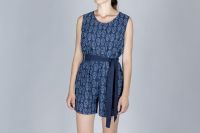
Blueprint by Matej Rabada
The young designer devoted himself to the traditional 400-year-old craft of blueprint production. Blueprinting is a textile technique of patterning canvas, which uses the principle of negative printing. The pattern is printed with a special mixture, called pap, on a white canvas, which is then dyed in cold indigo dilution. Pap during coloring prevents the penetration of the dye to the fibers. After removing it, a white pattern appears on a blue background at the end of the coloring process.
The Blueprint brand Matej Rabada focuses on hand-made production of the honest, indigo-dyed blueprint. The portfolio of designs consists of the traditional blueprints, as well as the author's motifs. The hand-colored blueprint also serves as the basis for the clothing creation of the brand. It aims to show that even more than 400 years of technology can find applications within current trends in design. The resulting product, therefore, does not seek to copy the past but represents the brand's current view of the traditional blueprint craft.
The clothing production is one of the local brands that have taken the path of slow fashion which pays attention to quality and hand-made processing, whether when dyeing blueprints or the actual creation of clothing. Thanks to this, production and creation are also respectful of the environment and nature, from which it draws inspiration.

Craftsman Vasile Şuşca - the tamer of “devils”
Vasile Şuşca is a craftsman from Săcel, Maramureş and has become known all over the world due to the traditional masks he has been making for about 30 years.
These masks were used in Maramureş for the winter holidays, they were worn for Christmas and New Year's Day and the ancestors from Maramureş believed that they drove away the evil. They are still used during the winter holidays, when groups of carolers carry on the old Romanian customs.
Vasile Şuşca graduated from an art high school, he painted, but he also practiced the profession of tailor and furrier.
An acquaintance of the artist, former director of the Popular Art School from Sighetu Marmatiei, which Vasile Şuşca attended, suggested him to make masks from the remaining materials, pieces of leather and others. First he studied the mask and the traditions of Maramureş, then with his imagination and talent he made thousands of folk masks.
To make his masks, the craftsman uses natural materials such as sheepskin or goatskin, ram's horns, cloth, hemp, beans and walnut shells, etc.
His masks are very expressive and very successful, he participated with them in exhibitions, fairs and shows, he appeared in newspapers, his works are exhibited in museums, but also on the walls of houses around the world.

Egraving and Inprinting in Silk
Engraving and imprinting in Silk. Hambis a local artist in imprinting decided in 2007 to create the non-profit organisation Hambis Printmaking School and Museum, that was part of Hambis’ vision of life: to get the Cypriots to know the art of printmaking, to learn how to make a print and to appreciate the prints of Cypriot and foreign artists both contemporary and from previous centuries.
The museum opened its doors in the summer of 2008, with a humble collection of a few hundreds of works all coming from donations. Hambis generously donated his small personal collection and some of his prints, along with printmakers from Cyprus and Greece who came to the museum to give the first modern works to the collection, as well as friends collectors – who donated enthusiastically one or more works from their collection.
Over the years, the donations have continued from loyal friends of the museum who come and visit us regularly, as well as from Cypriot and foreign printmakers, enriching the collection of the museum.
The temporary exhibitions held by the museum are also a good opportunity for donations by the exhibiting artists.
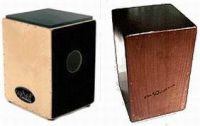
Flamenco Cajón
The flamenco Cajón is an instrument that due to its sonic characteristics fits very well with other acoustic instruments, since it has the ability to reproduce very low, medium and high sounds. It is usually played with the hands, fingers, or brushes and is used in many styles of music.
Currently it is made in Mohena and Requia woods, it is normally 47 cm high and has a 33 cm by 29 cm base. Thickness goes up to 15mm.
The musician straddles the Cajón, the latter being between his knees. The modern cajon has three screws that allow you to adjust the tone.
The percussionist can achieve additional sounds by using his palms or fingertips to play the cajon. Many times the tone of the drawer is enriched by adding small metal objects inside. For example, in Spain it usually includes three or four metallic strings inside to add resonance.
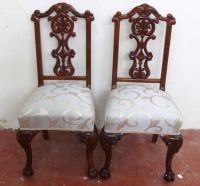
Goma Laca, furniture restoration
Goma Laca is a Granada family business specialized in the restoration and recycling of antique furniture. Founded in 1993, it has an experience that already encompasses the fourth generation of artisans, who provide them the knowledge and skills to carry out any restoration of the furniture.
Their work techniques are completely handcrafted, both in the repair, treatment, reconstruction, varnishing and decoration of any type of antique furniture, ranging from household items such as chairs or arches, to clocks, church altars or reliquaries.
The scarcity of prepared artisans and the predominance of industrial techniques in this sector make this company a unique case of preserving the cultural heritage of traditional craftsmanship.
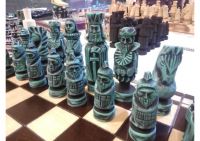
Handmade carved wood chess
Handmade carved wood chess pieces. Chess was considered to be a royal game, which was also played in Poland by nobility and townspeople. The game comes from India, although it was known in Europe in the 10th century. Its greatest popularity in Europe falls on the 16th and 17th centuries, that was known as the golden age of chess.
In the Benkeczy wood sculpture workshop, the carvings, sculptures and game sets, including chess, are hand-made. The Benkeczy Studio has been operating for many years and is located in the old part of Krakow. Its owner, Mr. Łukasz Wiciarz, is the only one in Krakow and one of the few manufacturers of carved chess in Poland. He carries out each sculpture by hand, he approaches each one with great passion and attention to details. His sculptures are made of various types of wood: linden, cherry, oak and sycamore. His studio is open to visitors, where you can see the process of making figures, for example, oak or cherry figures are cooked before carving. He willingly tells his guests about such details of his work. On the pictures there are some of Mr. Łukasz Wiciarz works.

Honey-cake making craft
Honey-cake dough is easy to form and can be kept fresh and delicious for a long time, it does not spoil neither raw nor baked over time. The honey-cake craft appeared in Slovakia in the 16th century, with Bratislava being the center of it. It expanded to other Slovakian towns in the 17th and 18th centuries. In the second half of the 19th century, this craft began to decline, especially due to development of the general confectionery craft. Recently, more and more women are engaged in baking and decorating honey-cakes. They offer their products at fairs, pilgrimages or feasts.
The video captures the course of the honey-cake production from the preparation and processing of the dough through its baking and decorating. Maria Balacinova produces honey-cakes for over 25 years. Initially, a dough is prepared, its treatment time is about 15 minutes. The finished dough is resting in the refrigerator for 4 days. The dough is loosened, and different shapes are cut out of it. Subsequently, the dough is baked in the oven. Baked honey-cakes are rubbed with thick frosting after cooling. The final look is achieved by decoration. Honey-cakes are not only beautiful, but also delicious. Bon appetite!

Imagery, the sculpture of the Passion
Francisco Romero Zafra is a sculptor, imager and restorer from Cordoba widely recognized for his work. A disciple of Antonio Bernal, he uses a variety of techniques to capture feeling, pain and devotion in his sculptures of the Andalusian Holy Week. Imagery is a multidisciplinary art that combines sculpture, plastering, painting, dressing and embroidery to create the figures on display during Easter.
He has made more than a hundred works that are processed in many cities of the country and abroad, as well as restorations of ancient works that have regained their splendor under his hand.
Francis masters not only sculpture but also polychromics as painting was one of his activities before dedicating himself fully to imagery.
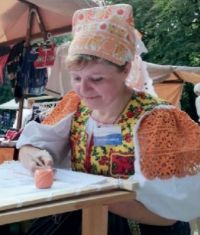
Kaska - production and renovation of folk costumes
The Podpolanie region is known to the public as a region with a unique folk culture, customs and traditions. Podpolanie is also specific in its dance and music folklore, as well as interesting instrumental and vocal performances.
Folk customs characteristic of the wider Podpolanie region stands out for its variety and richness of patterns as well as the cut and material used. The first folk customs were woven, and the patterns were embroidered with a common needle. The technique of embroidering with a crooked needle is recorded since the end of the 19th century. The crooked needle embroidery technique is characterized during embroidery by the yarn threaded through the fabric into a series of chains (chain stitch). The yarn is hooked from the underside and pulled out to the top with a needle.
Elena Marcinekova comes from Detva, where she has lived for many years. She has been dedicated to folk art, the production of folk costumes and their renovation since childhood. Also, she decorates various objects. The costumes are sewn in an original way, with original patches. The patches are embroidered using a crooked needle technique. Flowers and leaves are a typical pattern for Detvian patches, while the typical colour is yellow and orange and later red colour was added. The unique pieces of folk costumes as well as various costume parts can be purchased in the shop called Kaska, which is located in Banská Bystrica.
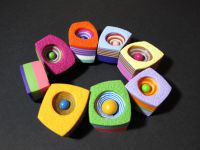
Natalia García de Leániz, designer - Contemporary Jewelry
Natalia began working with polymer clay more than 20 years ago, fascinated by the versatility and infinite creative possibilities that this material offers.
Natalia's work is mostly contemporary jewelry, combining clay with silver and thus creating unique pieces.
She uses techniques such as mica shift (volume effect with metallic polymer clay, although the piece does not have any relief), millefiori (construction of a multitude of forms combined with each other), skinner blend (degraded in sheets of clay) or mokume gane (combining sheets of different materials at the same time).
Her work is inspired by nature, but also by fashion, design, architecture, cartoons, fabrics, furniture ..., “everything that surrounds us and make us feel”. Her interest in this artistic path has led her to create the Polymer Clay Spanish Association and has collaborated in books and international publications to make known this art.
She has also taught courses in Spain, Europe and the United States, and has participated in international events such as Synergy and Eurosynergy. Also, Natalia has collaborated in the Staedler FIMO brand´s annual symposiums and coordinated the project "FIMO50" to celebrate the 50th anniversary of the brand and raise funds for the K.I.D.S. Kentucky Center and the Samunnat Project of Nepal.
The polymer clay formula was developed in 1939 by Sophie Rehbinder Kruse, the daughter of German doll maker Käthe Kruse. It is a type of clay to model with flexible and easy-to-work polyvinyl chloride (PVC) polymer, which hardens when heat is applied to the oven. It can be varnished or decorated with special lacquers and pens or with resistant acrylic and oil paintings,but you can also color the clay byadding pigments to the mixture and achieve vivid and original color palettes.

Romanian ancients leather shoes “opinci” - handmade sewn technique
Alexandru Ilinca is one of the most appreciated craftsman in Romania. The artisan carries on the craft of making “opinci”, antique leather shoes.
He was born in Orleşti, in Vâlcea County, Oltenia Region, where he learned to made opinci from his father. He practiced tailoring for almost a lifetime, until he retired and returned to make opinci. He often went to fairs where he noticed that there were no opinci for sale, to complete the folk costume, thus, Alexandru Ilinca began to make the traditional opinci again.
Because he loves ancestral customs and wants to carry on the craft learned from his father, the craftsman still participates in many fairs or exhibitions to make this craft known. Even if people no longer wear opinci, the craftsman is happy that many come to learn from the secrets of this craft.
His leather shoes reached important guests of Romania such as: Joe Biden, Emmanuel Macron, Charles, The Prince of Wales.
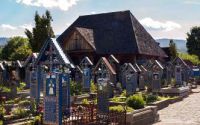
The Sculptor from Săpânța
Master Dumitru Pop from Săpânţa is a famous sculptor and painter of funerary monuments. He is one of the disciples of Ioan Pătraş Stan, the one who founded the Merry Cemetery from Săpânţa and Dumitru Pop continued his work and carried on the tradition.
Master Dumitru Pop was nine years old when he took his first lesson from the famous wood carver and painter Stan Ioan Pătraş. He studied with him for nine years and after the death of Stan Ioan Pătraş, in 1977, Dumitru Pop continued his work and became a famous sculptor and painter of funerary monuments, his works reaching all corners of the world.
The Merry Cemetery is unique in the world, due to the funerary monuments that have written stories about the lives of the deceased and suggestive pictures made in the famous Blue of Săpânţa. The stories written on the crosses are not funny, but rather carefree, a little sad or even disturbing - from the worst drinkers in the village to the young people who died in World War II. The occupation of the deceased is described mainly by paintings, which suggests that these people were defined by their occupation.
The Merry Cemetery is not necessarily cheerful, the approximately 850 colorful wooden funerary monuments and suggestive paintings give it its name.
Colors, naive folk art and a different view of life and death is the description of this cemetery to which the master Dumitru Pop fully contributed.
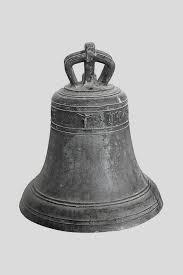
The sound of the bell
A company that descends from a saga of master foundries dating from 1881, from Torredonjimeno, in Jaén, they melt bells in an artisanal way, but also restore them and are in charge of automating bell towers. They have introduced new technologies in the world of these musical instruments, and the ringing of the bells is controlled even with the mobile. Its bells can be found in many parts of Spain and in corners such as the USA, Madagascar and Japan.
Bell metal is a very strong type of metal alloy. This alloy is a type of bronze that uses copper with tin in a ratio of 3: 1 (78% vs. 22% in precise values), which are easily melted together and then cast, producing the loudest alloy of all the bronzes, the more serious and deep tone being the greater amount of copper the bell has. The main ore is stannite, a sulphide of copper, tin and iron.
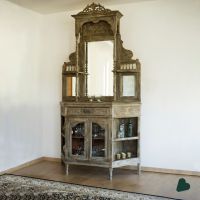
Traditional Furniture restoration
Re Love it is a local family business specializing in the restoration and recycling of antique furniture. It was incorporated in 1995 and it was the love of a craftsman for old furniture that lead him to transform his hobby into a profession passing his techniques to his children who work in the family business. The whole process is done by hand and the art of restoration goes back into the family.
Reloveit works mainly with wooden traditional Cypriot pieces of household furniture. The dedicated team of ReloveIt works tirelessly to revive the story behind carvings and cuts. They restore and refurnish old items with the chalk paint technique because the natural ingredients of those paints create a soft matte texture. Repairing and covering the worn parts with love and care, highlight the grace and the vintage look of old furniture.
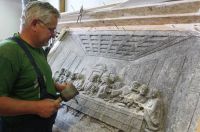
Wieliczka Salt-Mine Sculptures
Salt carving is a traditional form of handicraft. You can admire it in the Salt Mine in Wieliczka in Poland, following the path of the Tourist Route, where you can meet great figures associated with Polish culture and art at almost every step, whose images have been immortalized in the salt rock. Salt is an extremely delicate material, therefore working with it requires precision and accuracy. Although brittle and delicate, salt has a hardness similar to plaster. The treatment of salt itself is not difficult.
Salt sculptures are made not only by artist-sculptors, but above all by miners-sculptors.
Many 17th-century salt sculptures can be found in the Wieliczka Salt Mine in Poland. The mine is a priceless cultural monument which was entered on the UNESCO Heritage List in 1978. The history of the Mine itself dates back to the Middle Ages, when it was called Magnum Sal.
